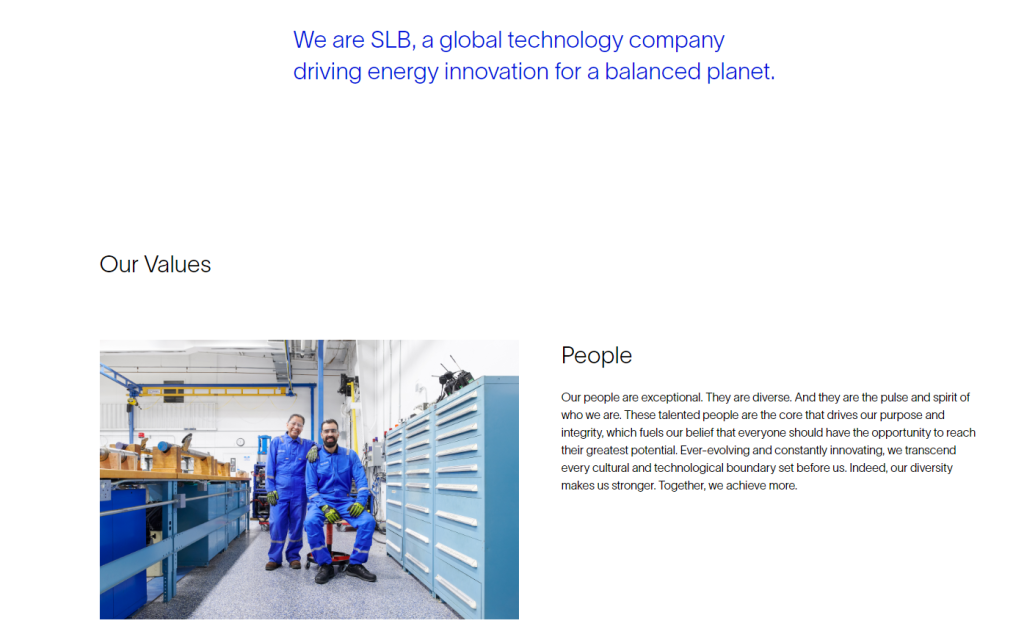Table of Contents
ToggleA Brief History of Schlumberger
Schlumberger Limited is a global oilfield services company that was founded in 1926 by French brothers Conrad and Marcel Schlumberger. The company started out as a small electrical engineering firm, but quickly expanded into the oil and gas industry after developing innovative electrical measurements to map subsurface formations.
In the 1930s, Schlumberger began providing well logging services to oil companies, revolutionizing the way drilling and exploration were conducted. The company continued to grow and innovate, introducing new technologies such as wireline logging and open-hole testing.
Over the years, Schlumberger expanded its operations globally and diversified its services to include drilling, reservoir characterization, and production management. The company also made several strategic acquisitions, further strengthening its position as a leader in the oilfield services industry.
Today, Schlumberger is a multinational corporation with operations in over 120 countries and is considered one of the largest oilfield services companies in the world. The company continues to invest in cutting-edge technologies and is committed to providing solutions for sustainable energy production and environmental stewardship.
Who Owns Schlumberger?
Schlumberger Limited, a leading oilfield services company, is owned by a diverse group of shareholders. The top 10 shareholders include institutional investors such as The Vanguard Group, BlackRock Inc., and Capital World Investors. Additionally, individual insiders such as CEO Olivier Le Peuch and Chairman Mark G. Papa also hold significant stakes in the company. Schlumberger Limited’s ownership is spread among a wide range of stakeholders, reflecting the company’s position as a global leader in the energy industry.
Schlumberger Mission Statement

Schlumberger Limited’s mission statement is to provide the oil and gas industry with the best possible technology and expertise to help maximize reservoir performance and optimize production. They are committed to delivering a high level of customer satisfaction, innovation, health, safety, and environmental stewardship in all their operations. Schlumberger aims to be the leading global provider of technology and services for the oil and gas industry, and to drive sustainable growth and value for their customers, employees, and shareholders.
How Schlumberger Makes Money?
Schlumberger Limited operates as a global oilfield services company, providing a range of technology, information solutions, and project management for the oil and gas industry. The company makes money by offering a variety of services, including drilling and evaluation, well construction, reservoir characterization, production optimization, and digital solutions. Schlumberger generates revenue through contracts with oil and gas companies for these services, as well as through the sale of technology and equipment. The company’s revenue stream is also supported by ongoing maintenance and support services for its products and solutions.
Schlumberger Business Model Canvas
The business model canvas is a strategic management tool that provides a visual representation of a company’s business model. It allows businesses to understand and communicate their key business activities and how they work together to create value for their customers, partners, and stakeholders.
Customer Segments:
Schlumberger Limited serves a wide range of customer segments, including oil and gas companies, exploration and production companies, and service companies in the energy industry.
Value Propositions:
Schlumberger provides a range of value propositions to its customers, including advanced technology, expertise, and integrated solutions for the oil and gas industry, helping them improve efficiency and productivity.
Channels:
Schlumberger uses a multi-channel approach to reach its customers, including direct sales, strategic partnerships, and digital platforms for product and service delivery.
Customer Relationships:
Schlumberger focuses on building long-term partnerships with its customers, providing ongoing support, and value-added services to meet their needs and drive customer loyalty.
Revenue Streams:
Schlumberger generates revenue through the sale of equipment, technology, and services to its customers, as well as ongoing maintenance and support agreements.
Key Resources:
Key resources for Schlumberger include its advanced technology, research and development capabilities, and a global network of operations and expertise.
Key Activities:
Schlumberger is engaged in key activities such as technology innovation, manufacturing, research and development, and service delivery to meet the needs of its customers and drive value creation.
Key Partners:
Schlumberger partners with a range of companies, including suppliers, technology providers, and industry organizations to enhance its offerings and capabilities.
Cost Structure:
The cost structure for Schlumberger includes costs associated with research and development, manufacturing, sales and marketing, operations, and ongoing support for its customer base.
Schlumberger’s Competitors
Schlumberger Limited faces tough competition in the oilfield services industry. Some of its top competitors include Halliburton, Baker Hughes, Weatherford International, National Oilwell Varco, and TechnipFMC. These companies offer similar services and technological innovations, and often compete for the same customers in the global energy market. Schlumberger must continuously innovate and provide high-quality services to maintain its competitive edge in this dynamic industry.
Schlumberger SWOT Analysis
Strengths:
1. Global presence and operations in over 120 countries.
2. Strong R&D capabilities and technological expertise.
3. Diverse portfolio of services and products in the oil and gas industry.
4. Strong financial performance and stability.
5. Established brand and reputation in the industry.
Weaknesses:
1. Vulnerability to fluctuations in oil and gas prices.
2. Dependence on a few key clients for a significant portion of revenue.
3. High competition in the industry leading to pricing pressure.
Opportunities:
1. Increasing demand for energy services and products in emerging markets.
2. Expansion of digital technology and data analytics in the oil and gas industry.
3. Potential for growth in renewable energy and sustainability initiatives.
4. Mergers and acquisitions to expand market share and capabilities.
Threats:
1. Fluctuations in global oil and gas markets.
2. Regulatory and environmental risks.
3. Increasing competition from new entrants and existing players.
4. Economic and geopolitical uncertainties impacting the industry.
Concluding Analysis
In conclusion, Schlumberger Limited has established itself as a leader in the oilfield services industry with its innovative business model and global reach. As an analyst, I am optimistic about the future of the business despite the challenges posed by the ever-changing oil and gas market. With its focus on technology, sustainability, and diversification, I believe that Schlumberger will continue to thrive and adapt to the evolving needs of the industry. The company’s commitment to driving operational efficiency and delivering value to its customers positions it well for sustained success in the years to come.
Additional Resources
To keep learning and advancing your career, we highly recommend these additional resources:
Business Model Canvas of The Top 1,000 Largest Companies by Market Cap in 2024
A List of 1000 Venture Capital Firms & Investors with LinkedIn Profiles
Peter Thiel and the 16 Unicorns: The Legacy of Thiel Fellowship












